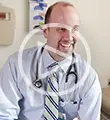What is dyslexia?

Dyslexia is a learning disability in reading. People with dyslexia have trouble reading at a good pace and without mistakes. They may also have a hard time with reading comprehension, spelling, and writing. But these challenges aren’t a problem with intelligence.
Snapshot: What dyslexia is
Dyslexia is a common condition that makes it hard to work with language. Some experts believe that between 5 and 10 percent of people have it. Others say as many as 17 percent of people show signs of reading challenges.
People with dyslexia don’t outgrow it. But there are teaching approaches and strategies that can help them improve their reading skills and manage the challenges. People of any age can be tested for dyslexia, although the tests are different for adults than for kids.
People with dyslexia typically have trouble reading fluently. They often read slowly and make mistakes. That can impact how well they comprehend what they read. But when other people read to them, they often have no problem understanding the text.
Dyslexia can create difficulty with other skills, too. These include:
Reading comprehension
Spelling
Writing
Math
People sometimes believe dyslexia is a problem with vision. They think of it as reversing letters or writing backwards. But dyslexia is an issue with language.
It’s important to know that while dyslexia impacts learning, it’s not a problem of intelligence. People with dyslexia are just as smart as their peers. There are countless stories about people thriving with dyslexia, including actors, entrepreneurs, and elected officials.
Dive deeper
Watch a video to see dyslexia through a child’s eyes.
Debunk common myths about dyslexia.
Explore a collection of dyslexia success stories.
Dyslexia signs and symptoms
Dyslexia impacts people in different ways. So, symptoms might not look the same from one person to another.
A key sign of dyslexia is trouble decoding words. This is the ability to match letters to sounds. Kids can also struggle with a more basic skill called phonemic awareness. This is the ability to recognize the sounds in words. Trouble with phonemic awareness can show up as early as preschool.
In some people, dyslexia isn’t picked up until later on, when they have trouble with more complex skills. These can include grammar, reading comprehension, reading fluency, sentence structure, and more in-depth writing.
Some of the signs of dyslexia have to do with emotions and behavior. People with dyslexia might avoid reading, both out loud and to themselves. They may even get anxious or frustrated when reading. This can happen even after they’ve mastered the basics of reading.
Dyslexia doesn’t just affect learning. It can also impact everyday skills and activities. These include social interaction, memory, and dealing with stress.
Dive deeper
Learn more about signs of dyslexia in kids at different ages.
For families: Hear an expert explain how to choose books for kids who struggle with reading.
For educators: Learn about structured literacy and get strategies for teaching reading.
Possible causes of dyslexia
Researchers haven’t yet pinpointed exactly what causes dyslexia. But they do know that genes and brain differences play a role. Here are some of the possible causes of dyslexia:
Genes and heredity: Dyslexia often runs in families. About 40 percent of siblings of people with dyslexia also struggle with reading. As many as 49 percent of parents of kids with dyslexia have it, too. Scientists have also found genes linked to problems with reading and processing language.
Brain anatomy and activity: Brain imaging studies have shown brain differences between people with and without dyslexia. These differences happen in areas of the brain involved with key reading skills. Those skills are knowing how sounds are represented in words, and recognizing what written words look like.
But the brain can change. Studies show that brain activity in people with dyslexia changes after they get proper instruction or tutoring. And scientists are learning more all the time.
Dive deeper
Watch a video about dyslexia and the brain.
Take a peek inside a day in the life of a teen with dyslexia.
How dyslexia is diagnosed
The only way to know for sure if someone has dyslexia is through a full evaluation, done either at school or privately.
Having a diagnosis (schools call it an identification) can lead to supports and services at school, and accommodations at college and work.
There are a few types of professionals who can assess people for dyslexia. These include school psychologists, clinical psychologists, and neuropsychologists. An evaluator will give a series of tests for dyslexia. They’ll test in other areas as well to see exactly where any weaknesses and strengths lie.
School evaluations are free. But private ones can be very expensive. In some cases, there are ways to get them for free or at a low cost. Local universities often have programs in psychology that have clinics where students do their training.
Teaching hospitals may have research projects where people can get evaluations for free. Learning Disabilities Association of America (LDA) has local chapters in every state. They may be able to help with finding free or low-cost options.
Dive deeper
For educators: Learn about common classroom accommodations for students with dyslexia.
For adults: Learn about how dyslexia is diagnosed after high school.
For families: Learn how to request a school evaluation or a private evaluation.
Parents and caregivers: Is your child struggling with reading, or has your child been diagnosed with dyslexia?
Educators: Do you have a student who’s struggling with reading or who has an IEP for dyslexia?
Do you think you might have dyslexia?








